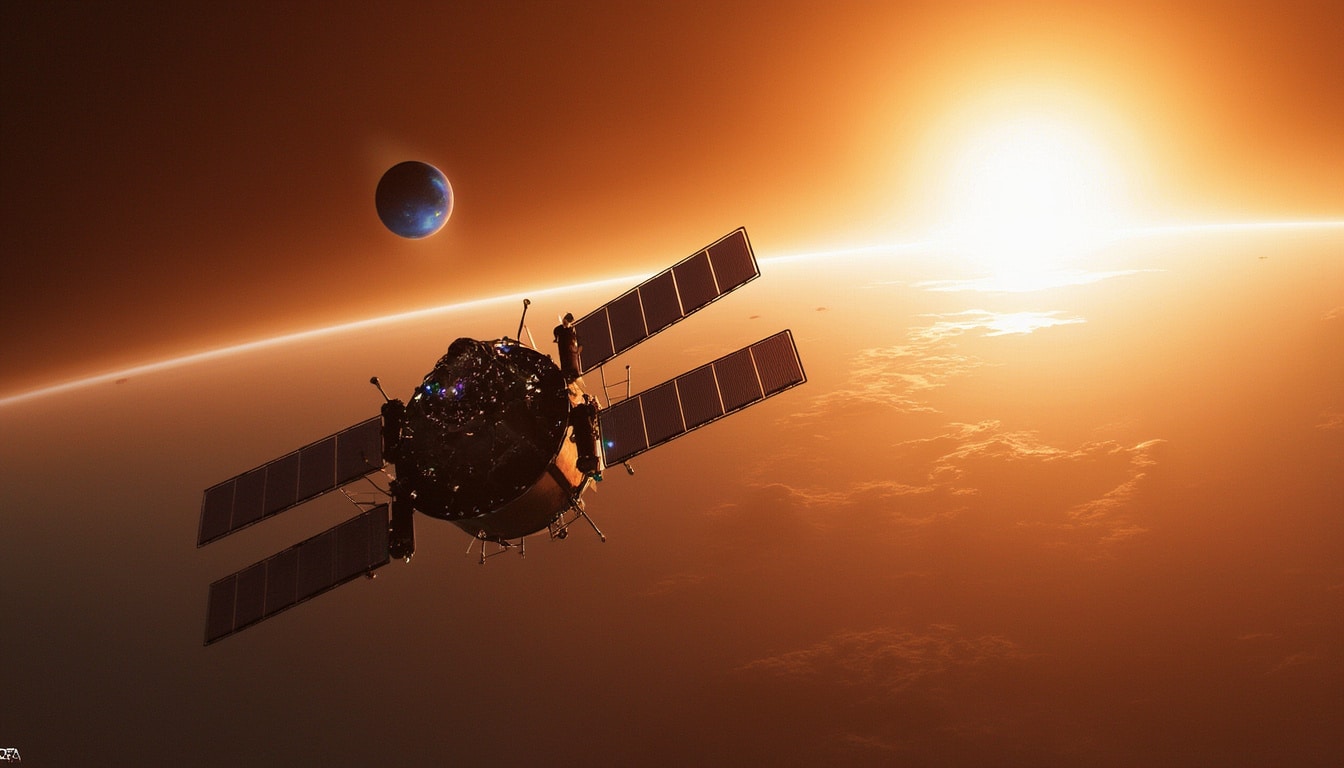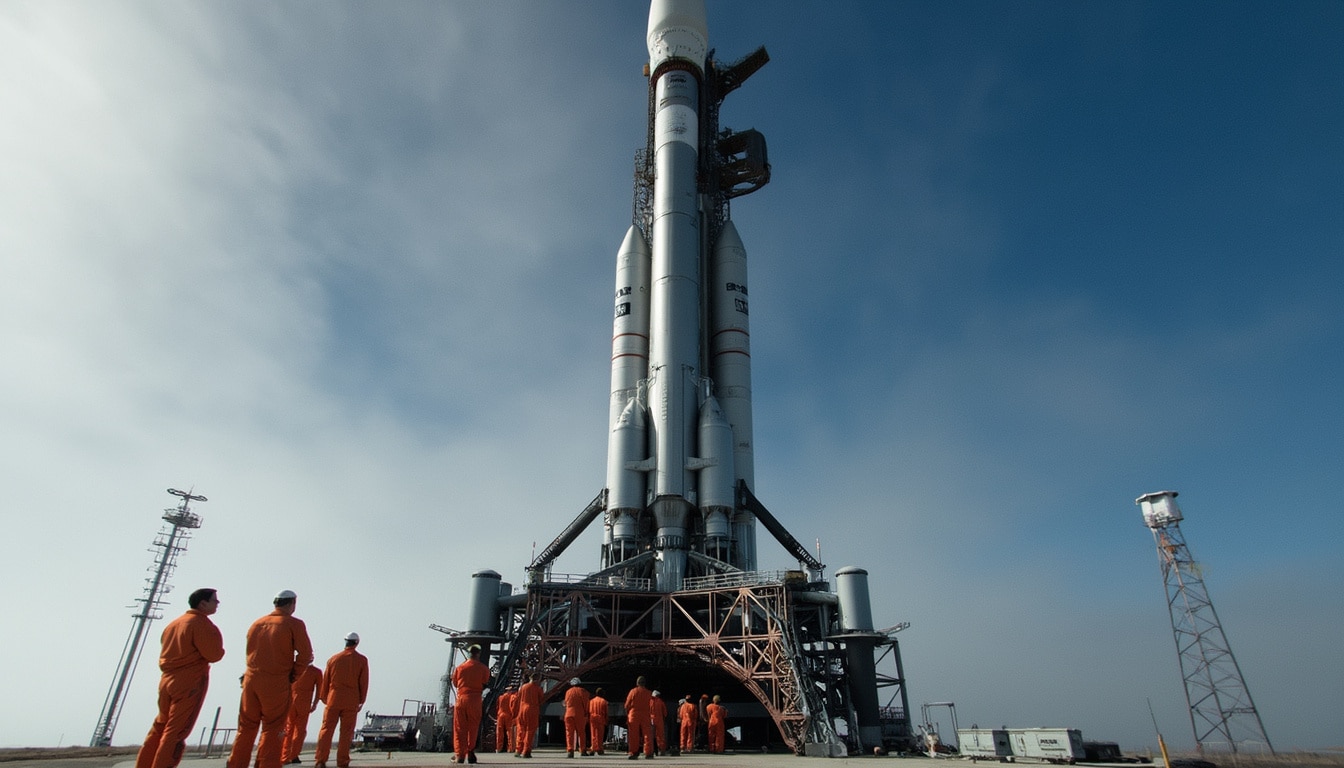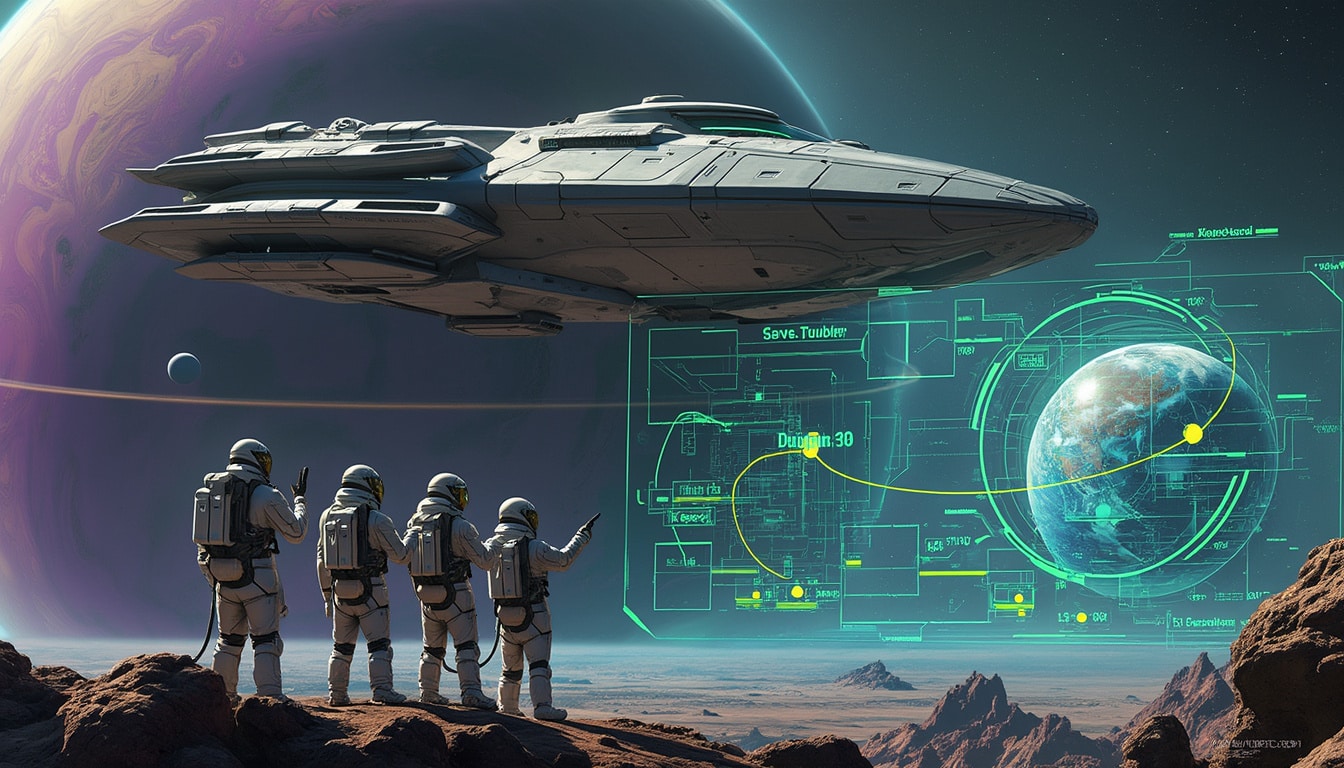The cosmos holds many secrets, and NASA’s latest endeavor aims to unlock some of them through the Pandora mission. Recently, NASA announced that it has officially chosen SpaceX for the maiden launch of Pandora, a small satellite designed specifically to study exoplanet atmospheres. This initiative marks a significant milestone in our quest to understand the universe beyond our own solar system.
Pandora, which weighs approximately 716 pounds, will orbit Earth to observe known exoplanets, offering fresh data that will deepen our comprehension of how stellar changes influence planetary atmospheres. By utilizing advanced technology and innovative methods, this mission promises to enhance scientific interpretations of distant worlds. With the Falcon 9 rocket standing as its launch vehicle, this project is not merely another satellite in orbit; it represents a giant leap for astrophysics.
The Significance of the Pandora Mission
The Pandora mission stands as an essential component of NASA’s Astrophysics Pioneers program. Its primary goal involves the investigation of the atmospheres of distant worlds, specifically those classified as transiting exoplanets. These planets cross the face of their host stars from our viewpoint on Earth, presenting unique opportunities for observation. The data collected will enable scientists to discern how variations in stellar behaviors impact the atmospheres of these exoplanets.
Equipped with a cutting-edge 45-centimeter telescope that can capture both optical and near-infrared light, Pandora will take simultaneous measurements of a star and its orbiting planet over a series of long-duration observations. Each selected exoplanet will undergo 10 observation sessions lasting 24 hours each, providing a wealth of information for analysis. This innovative approach is set to mark a new chapter in our understanding of distant celestial bodies. Significantly, the findings from Pandora will not only stand alone but will also enhance data collected by other prestigious missions, including the James Webb Space Telescope.

Mission Objectives and Goals
The overarching goal of the Pandora mission is to provide scientists with the tools they need to investigate the atmospheres of exoplanets in greater detail than ever before. By focusing on at least 20 known exoplanets, the data collected will help clarify the complex relationship between a star’s activity and its planetary system. This effort is poised to revolutionize the way exoplanet atmospheres are examined.
Pandora has the potential to make groundbreaking contributions to our understanding of planetary atmospheres. Its innovative technical approach allows for the separation of star and planetary signals, which will ultimately streamline future studies targeting the detection of habitable planets. The mission’s design incorporates advances in technology that enhance observation capabilities, forming the basis for future explorations in space.
Launch Details and Mission Timeline
Pandora is expected to lift off from SpaceX’s launch site in Texas, with its first launch window set for this fall. The collaborative effort between NASA and SpaceX underlines the integral role that commercial spaceflight plays in contemporary space exploration. NASA has made strategic decisions in selecting rideshare capabilities, ensuring that missions like Pandora can be conducted efficiently and cost-effectively.
The Falcon 9 rocket will carry Pandora into low Earth orbit, where it will perform its observations. This mission poses new challenges and opportunities, requiring a multifaceted approach to satellite management and data analysis. The timeline is crucial, as staying on schedule is essential not only for mission success but also for maximizing the scientific yield from the collected data.

Collaboration with SpaceX
The selection of SpaceX as the launch provider for the Pandora mission epitomizes the growing synergy between government agencies and private companies in aerospace. Through NASA’s Venture-Class Acquisition of Dedicated and Rideshare contract, the agency ensures flexibility and efficiency while accessing the capabilities of industry leaders. This partnership showcases how collaborative efforts can lead to groundbreaking advancements in space science.
SpaceX has previously demonstrated its reliability through successful launches of other NASA missions, such as the Transiting Exoplanet Survey Satellite (TESS). This confidence plays a significant role in ensuring that the Pandora mission remains on a robust path towards successful launch and operation.
Technological Innovations and Science Goals
One of the most exciting aspects of the Pandora mission is the technology that powers its operations. The use of a highly efficient 17-inch all-aluminum telescope not only enhances the observational capabilities but also exemplifies the strides made in small satellite technology. These advancements represent a break from traditional methods, allowing for more sophisticated observations of exoplanets and their interactions with their respective stars.
The emphasis on measuring brightness in both visible and near-infrared wavelengths is imperative for proper data collection. Such measurements will enable scientists to derive insights about atmospheric composition and behavior—key factors in understanding planetary habitability. The blending of optics and infrared technology could pave the way for future missions designed to probe further into the atmospheres of distant worlds.

Scientific Impact of the Data Collected
The collected data will serve as a cornerstone for future studies aimed at identifying habitable worlds. The overarching goal is to obtain precise insights that can guide scientists in acknowledging potential life-supporting characteristics in exoplanets. Pandora’s mission is positioned to provide invaluable information about atmospheric molecules, enabling researchers to establish strong connections between various planetary environments and their stars.
The implications of such findings are significant, contributing to the broader realm of astrobiology by enhancing our understanding of how life could exist on alien planets. The results generated from Pandora’s observations will create a foundation for additional research that seeks to explore the parameters critical for sustaining life. This mission emphasizes the importance of ongoing exploration and collaboration among scientists worldwide.
Future Prospects and Evolving Research
Looking ahead, the Pandora mission stands as a beacon for future missions probing exoplanets and their atmospheres. As data emerges from its observations, new questions will arise, driving further investigations into exoplanetary atmospheres. This mission could pave the way for influential discoveries related to the existence of habitable zones around stars, a key characteristic in the search for extraterrestrial life.
Future missions may build on insights gained from Pandora to develop enhanced technologies for studying exoplanets. The accumulated knowledge will inform not just scientific approaches but will also guide next-generation space telescopes and observational strategies.

Evolving Questions in Astrobiology
The Pandora mission propels our capacity to interrogate the characteristics that define potentially habitable worlds. As such, it reinvigorates questions surrounding the criteria necessary for life to thrive elsewhere. The atmospheric data collected will reveal critical information regarding the elements and compounds that could support life.
Furthermore, the mission’s findings will catalyze discussion concerning the diversity of planetary environments and their relationship with habitability. By unveiling the complexities of exoplanet atmospheres, Pandora may reshape our understanding of the conditions essential for life.
Pandora Mission: A Future in Exploration
As we embark on this exciting chapter of space exploration and discovery, the Pandora mission stands poised to significantly alter our understanding of distant worlds. The amalgamation of innovative technology, collaboration between NASA and SpaceX, and the relentless pursuit of knowledge encapsulate the spirit of this mission.
With its groundbreaking approach to the study of exoplanets and their atmospheres, Pandora not only offers the promise of answers but also ignites curiosity about what lies beyond our celestial neighborhood. The journey ahead invites everyone to stay tuned as this mission unfolds, with every new finding promising to enrich our comprehension of the universe.




Leave a Reply